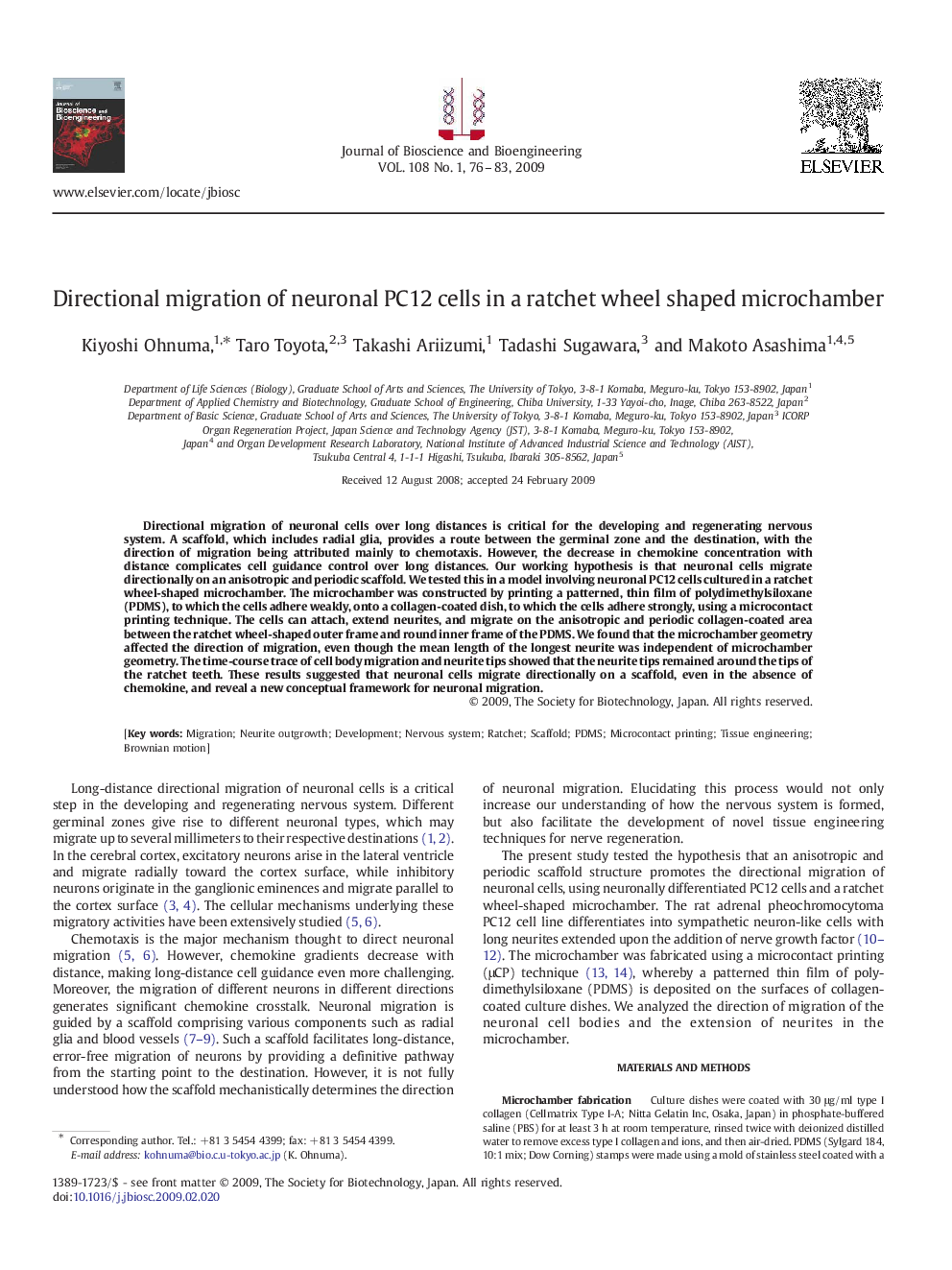| Article ID | Journal | Published Year | Pages | File Type |
|---|---|---|---|---|
| 21756 | Journal of Bioscience and Bioengineering | 2009 | 8 Pages |
Directional migration of neuronal cells over long distances is critical for the developing and regenerating nervous system. A scaffold, which includes radial glia, provides a route between the germinal zone and the destination, with the direction of migration being attributed mainly to chemotaxis. However, the decrease in chemokine concentration with distance complicates cell guidance control over long distances. Our working hypothesis is that neuronal cells migrate directionally on an anisotropic and periodic scaffold. We tested this in a model involving neuronal PC12 cells cultured in a ratchet wheel-shaped microchamber. The microchamber was constructed by printing a patterned, thin film of polydimethylsiloxane (PDMS), to which the cells adhere weakly, onto a collagen-coated dish, to which the cells adhere strongly, using a microcontact printing technique. The cells can attach, extend neurites, and migrate on the anisotropic and periodic collagen-coated area between the ratchet wheel-shaped outer frame and round inner frame of the PDMS. We found that the microchamber geometry affected the direction of migration, even though the mean length of the longest neurite was independent of microchamber geometry. The time-course trace of cell body migration and neurite tips showed that the neurite tips remained around the tips of the ratchet teeth. These results suggested that neuronal cells migrate directionally on a scaffold, even in the absence of chemokine, and reveal a new conceptual framework for neuronal migration.
